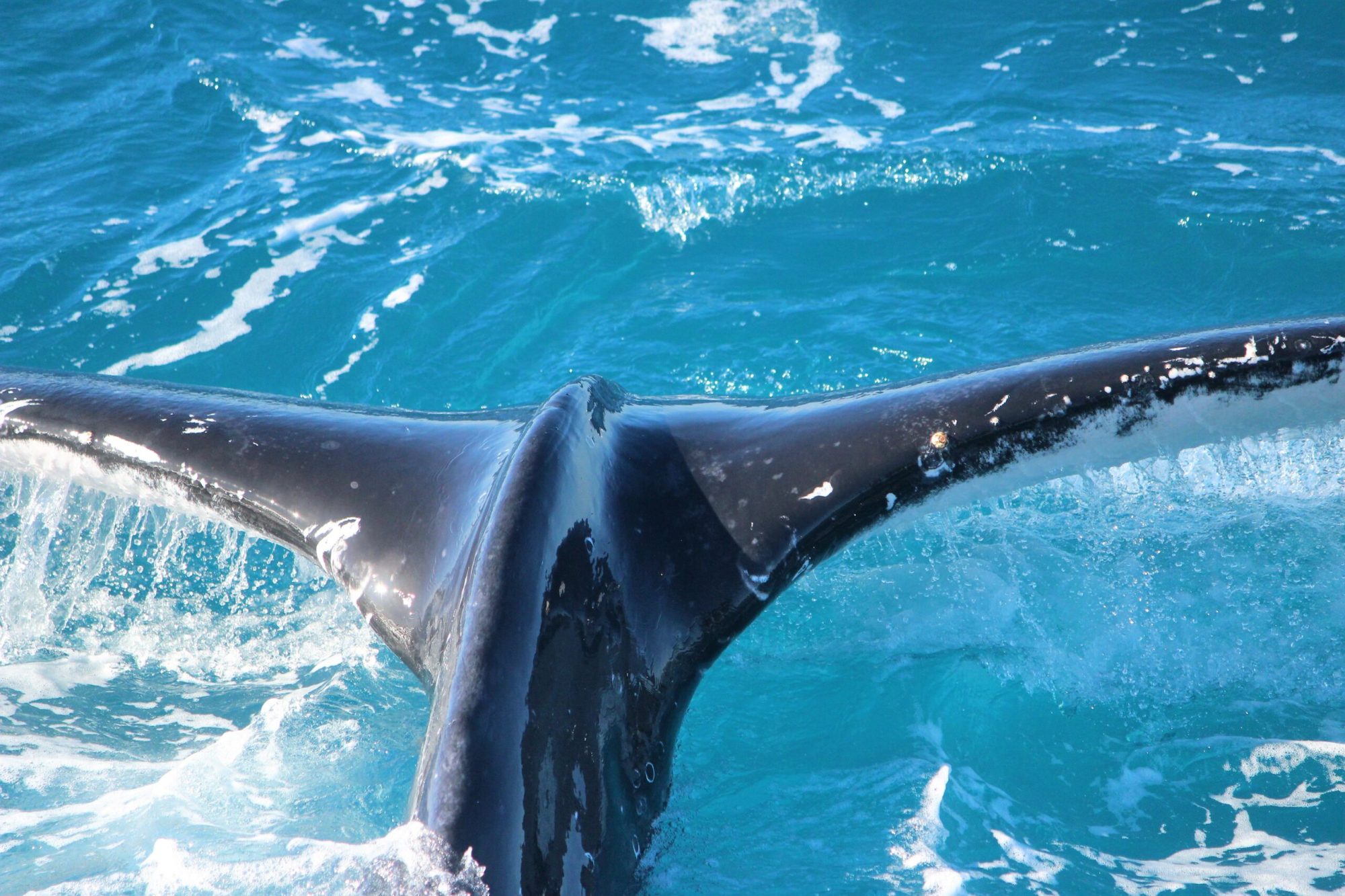Whale Watching Airlie Beach

Whale watching is an amazing experience that everyone should try at least once in their lifetime. Seeing these gentle giants up close in their native habitat is simply breathtaking. And what more beautiful location to do it in than on Airlie Beach, one of Australia’s most breathtaking locations?
We’ll go over all you need to know about whale viewing at Airlie Beach, including when to go, what sorts of whales to expect, and what behaviors to watch for.
When is whale migration season?
Between June and September, when humpback whales migrate from Antarctica to the warmer waters of the Whitsundays to mate and give birth, is the ideal time to go whale watching in Airlie Beach. During this time, you can expect to see these beautiful creatures breaching, tail slapping, and showing off a range of other impressive behaviors.
What types of whales might I see?
There are two main types of whales you might see during your whale-watching tour in Airlie Beach: humpback whales and dwarf minke whales.
Humpback whales:
These are the most common types of whales seen during a whale-watching tour at Airlie Beach. Humpback whales are gentle giants that can grow to reach 16 metres long and 40 tonnes in weight.
Its hump-shaped dorsal fin and long, pectoral fins, which may be up to a third of their entire length, set them apart. In addition to their beautiful, eerie songs that they use to communicate with other whales, humpback whales are well known for them.
Dwarf minke whales:
These whales only reach maximum lengths of 8 metres and weights of 5 tonnes, making them smaller than their well-known counterpart, the humpback whale. Despite their size, these whales are renowned for their lively and curious nature, making them fascinating creature to observe up close.
Exclusive to the waters surrounding the Great Barrier Reef, spotting a dwarf minke whale is an extraordinary experience. Although they are less commonly sighted than humpback whales, encountering one of these majestic creatures is still a breathtaking sight to behold. With their playful nature, they are known to approach boats, swim alongside divers, and even breach out of the water.
Will we see the famous white whales, Mingaloo and Chalkie?
Mingaloo and Chalkie are two famous white humpback whales that are occasionally seen on whale watching tours in Airlie Beach.
Mingaloo is an all-white male humpback whale who was discovered in 2011 and has since become a celebrity in the whale watching community. Chalkie is another white humpback whale that’s been spotted in the Whitsunday region, although he’s less well-known than Mingaloo.
While it’s not guaranteed that you’ll see these famous whales on your tour, it’s always a possibility!
Humpback Whale Behaviors
Humpback whales are known for their impressive displays of behavior while migrating along the Australian coastline. Some of the most common behaviors you might see during a whale watching tour include-
Breaching
This is when a whale leaps out of the water and crashes back down, often making a loud splash. Although the exact reason why whales breach is still unknown to scientists, it may be a means of communication or a means of parasite removal.
Tail Lifts
Humpback Whales are known for their distinctive tails, which can be up to 18 feet wide. They often lift their tails out of the water, which is called a tail lift. This behaviour may also be a form of communication or a way to regulate body temperature.
Spy Hop
This is when a whale pops its head out of the water to take a look around. It’s thought that this behaviour is used to get a better view of their surroundings.
Blowing
Whales breathe air through their blowholes, which is located on the top of their head. Different species of whales can be identified by their spouts of water and air that they produce when they exhale.
Tail Slap
Tail lifts occur when a humpback whale raises its tail out of the water, often accompanied by a fluke slap or a tail slap. It provides an excellent photo opportunity and a nice way to view the whale’s tail from below.
Will we see whales on your Tours?
Being wild creatures, whales may be unpredictable, so there is no assurance that you will see them on any particular tour. However, the operators of whale-watching tours in Airlie Beach have a very high success rate of spotting whales during the migration season.
They use their local knowledge and experience to find the best spots for whale watching and have specially designed boats that allow for excellent viewing opportunities. Plus, many tours offer a guarantee that if you don’t see any whales, you can come back for free on another day.
whale watching in Airlie Beach is an unforgettable experience that should not be missed during the migration season. It’s not surprising that visitors from all over the world travel to this stunning region of Australia to enjoy whale watching given the opportunity to view Humpback Whales, Dwarf Minke Whales, and other species as well as see their unique behaviours.
